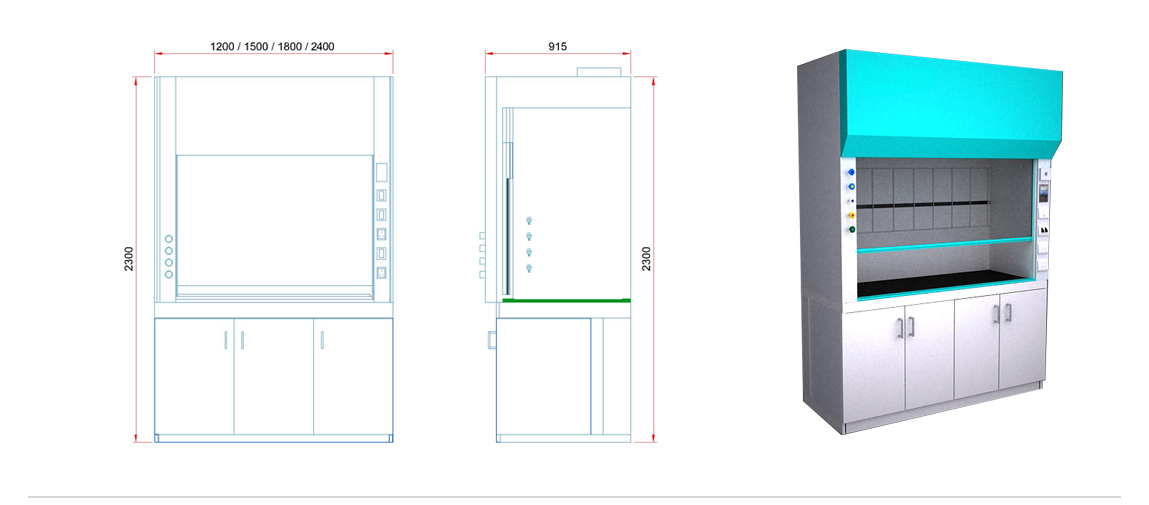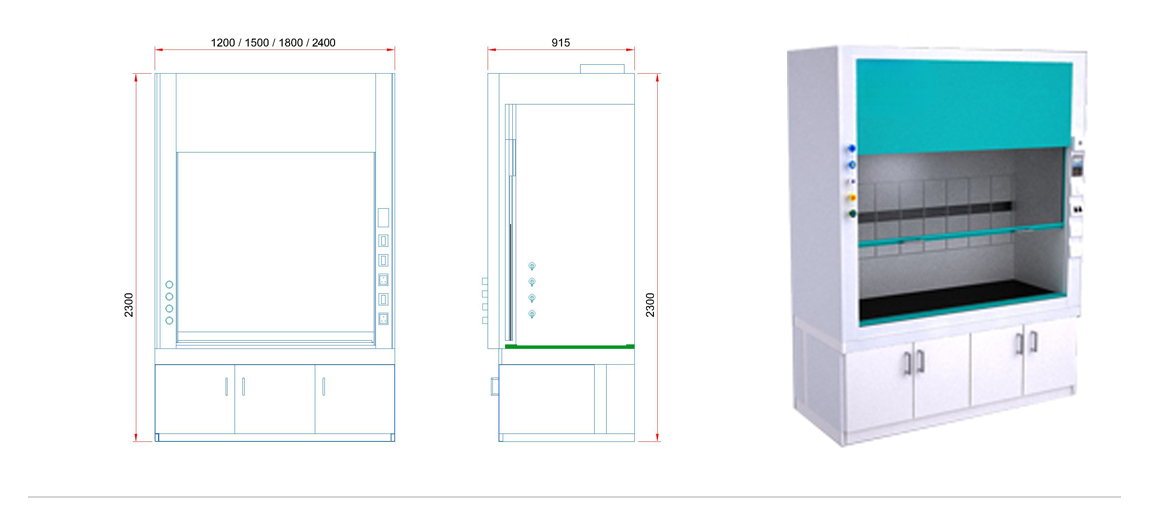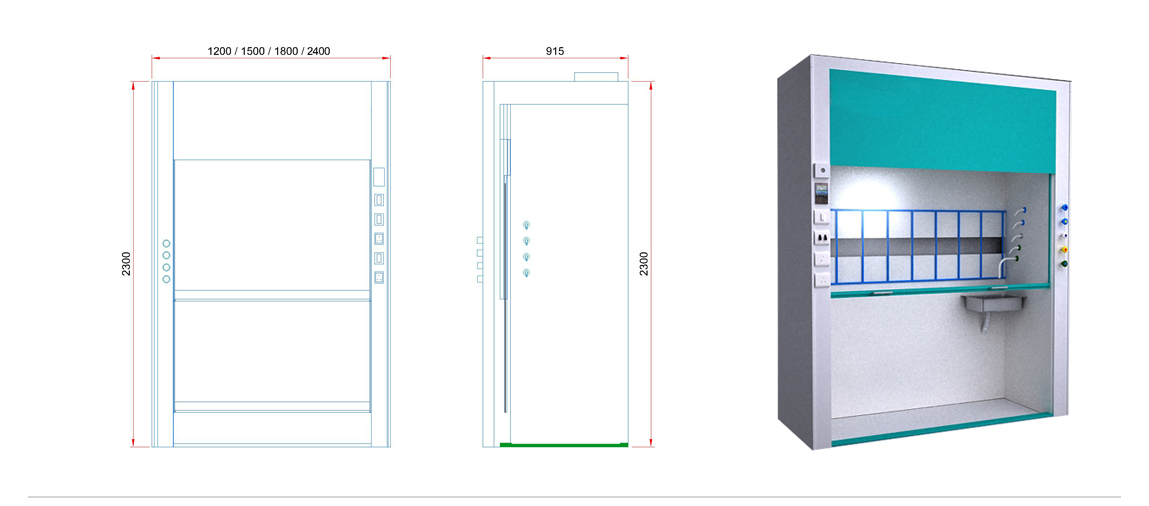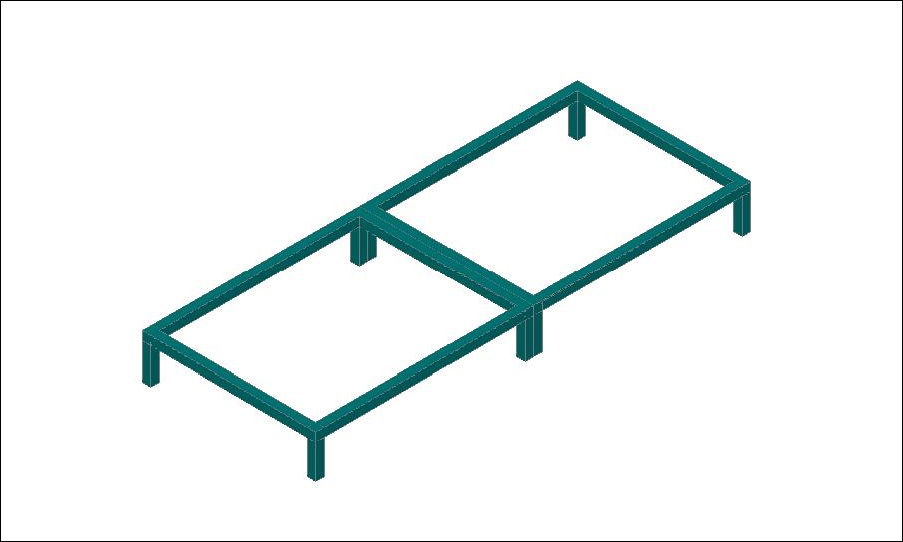
We are leading fume hood manufacturers in Mumbai, India. We have been consistently offering top-notch services in this field for several years. Our fume hood and our client-centered approach have been praised by both local and foreign sectors. Fume hoods are a crucial element in keeping the lab atmosphere sterile and secure. It’s a ventilation system that mainly protects lab workers from dust, gasses, and vapor produced inside the hood. By serving as a physical fence, it also serves as protection against chemical spills and uncontrolled reactions, and fires. We produce all of our laboratory fume hoods as per pertinent industrial standards. Our products are of the highest caliber and go through numerous tests before being offered for sale. We can manufacture Laboratory Hoods on-site to customer specifications for size and shape. Standard-size ready-made fume hoods are also available.
Std. Bench Type Fume Hood![]()
Std. Bench type of Fume Hood is characterized by a std. worktop height which results in a std. working height for the operator. This allows Std. height of equipment to be installed and mounted in the work chamber, tested in acc. with EN 14175.


Low Bench Type of Fume Hood![]()
![]()
![]()
![]()
![]()
Low Bench type of Fume Hood is characterized by a low worktop height which results in a large working height for the operator. This allows tall distillation equipment to be installed and mounted in the work chamber, tested in acc. with EN 14175. Rest of the items remains same as Std. Bench Type of Fume Hood.


Walking Type of Fume Hood![]()
![]()
![]()
![]()
![]()
Walking / Floor mounted fume hoods are used for applications which require large apparatus. As the name implies, these hoods are floor mounted without any work surface. This facilitates the transfer of equipment and materials into, and out from the hood.


Education Fume Hood![]()
![]()
![]()
![]()
![]()
Education Fume Hood has all 4 sides made of safety glass, and this hood is commonly used in educational institutions to allow students to easily view the teachers’ demonstrations inside the fume hood from all angles, enhancing efficiency in teaching laboratories, tested in acc. with EN 14175.
Pedestal Frame Design
Hood Body
The visible part of the fume hood that serves to contain hazardous gases and vapors.
Rear Baffles
Moveable partitions used to create slotted openings along the back of the hood body. Baffles keep the airflow uniform across the hood opening, thus eliminating dead spots and optimizing capture efficiency.
Sash
The sliding “door” to the hood. By using the sash to adjust the front opening, airflow across the hood can be adjusted to the point where capture of contaminants is maximized. Each hood has its optimum sash configuration. The sash should be held in this position when working in the hood and closed completely when the hood is not in use. The sash may be opened completely to set up equipment, but must be returned to the optimum setting prior to generating contaminants inside the hood. Hoods are equipped with one of three types of sashes:
Vertical sashes
provide the greatest overall access and are the most common.
Horizontal
sashes provide the best access to the top interior of the hood, but do not provide access to the entire width at the same time. However, they can be positioned as a body shield to protect the operator, while enabling access through the sides.
Combination vertical and horizontal:
combine horizontal sash panes, in a vertical rising frame. As such, they offer the advantages of both vertical and horizontal sashes.
Airfoil
located along the bottom and side edges the airfoil streamlines airflow into the hood, preventing the creation of turbulent eddies that can carry vapors out of the hood. The space below the bottom airfoil provides source of room air for the hood to exhaust when the sash is fully closed. Removing the airfoil can cause turbulence and loss of containment.
Work surface
generally a laboratory bench top, or the floor in the case of a floor-mounted hood, this is the area where the work is conducted.
Exhaust plenum/Duct
the exhaust plenum helps distribute airflow evenly across the hood face. Materials such as paper towels drawn into the plenum can create turbulence in this part of the hood, resulting in areas of poor airflow and uneven performance.
Face
the imaginary plane between the bottom of the sash and the work surface. Hood face velocity is measured across this plane.


ASHRAE-110
Face Velocity Test
In this case the velocity in the front of the fume hood is measured using an anemometer at 6 different locations with 18 inch sash opening. The average reading as per the norms should confirm to 100 FPM
Tracer Gas Test
In this test a smoke generating machine is been used to generate smoke and the gas is traced for correct air flow dynamics. The gas should flow through the baffles as required.
Containment Test
In this test HF6 gas is used to check if the containment of air in the fume hood is proper or not. HF6 is a gas which has the highest density.


